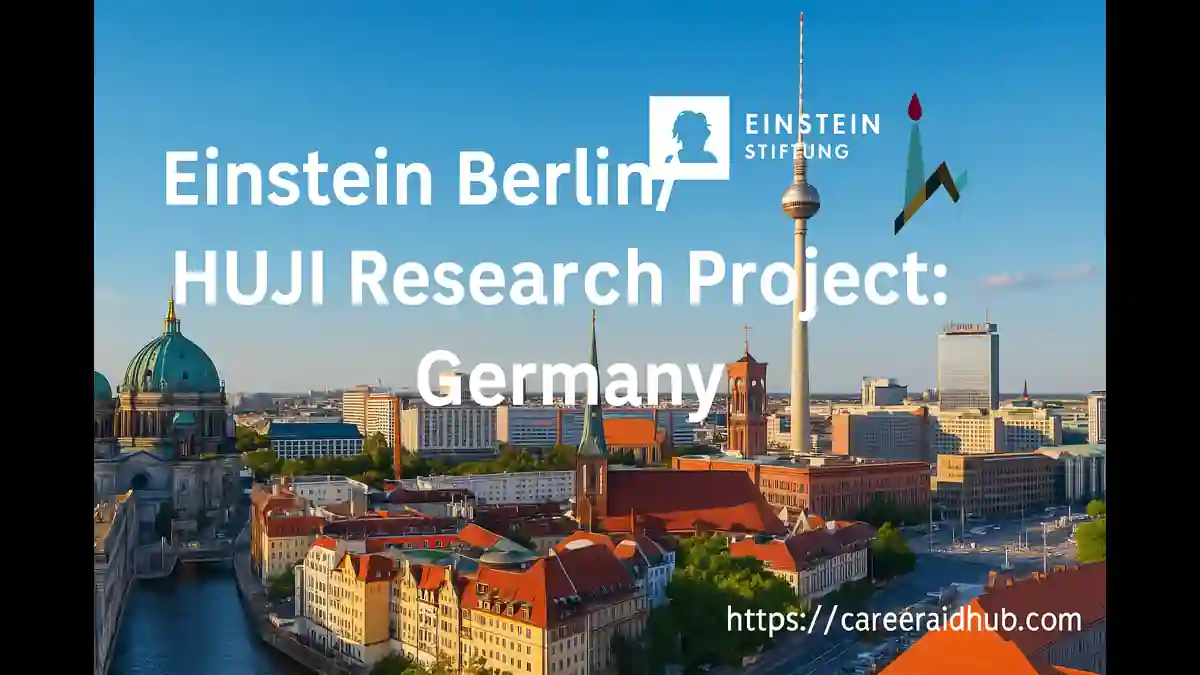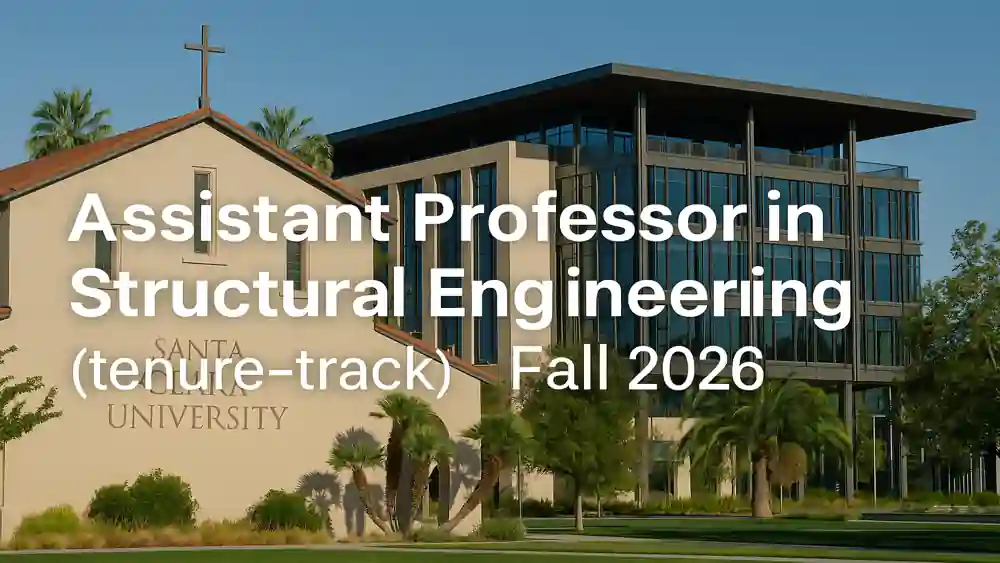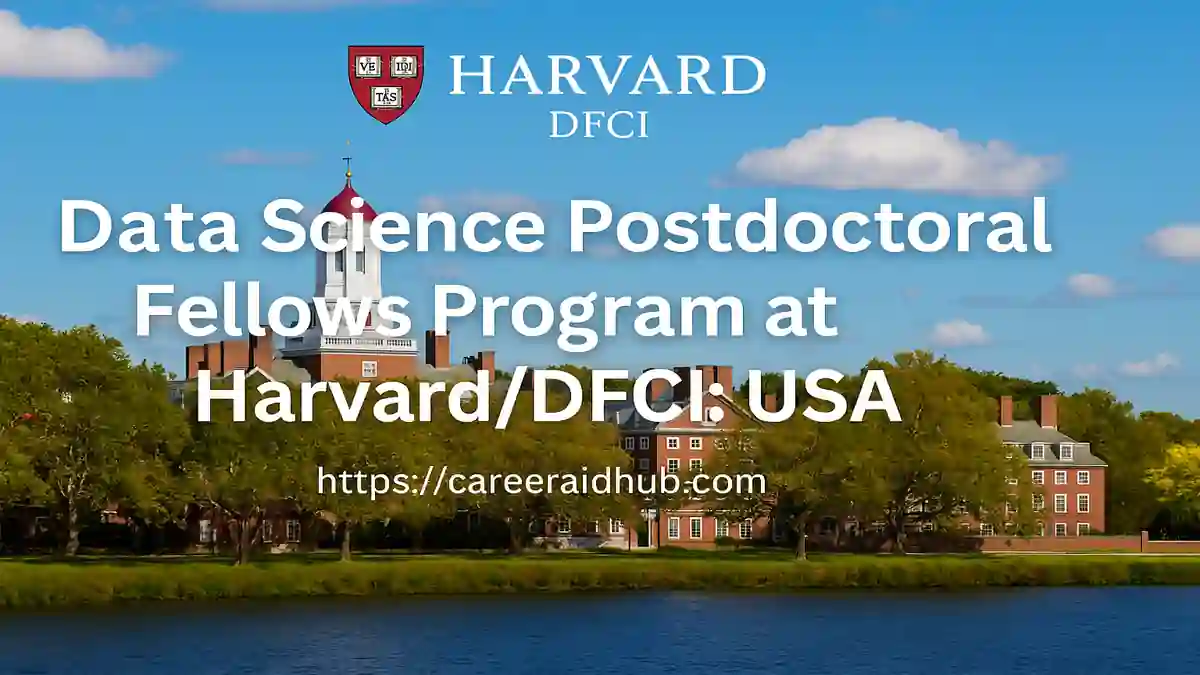Einstein Berlin/HUJI Research Project
The Einstein Berlin/HUJI Research Project is a focused funding instrument that builds deep, two-way collaborations between eligible Berlin universities and the Hebrew University of Jerusalem (HUJI). Designed for professorial leads, it supports up to three years of joint research with resources for personnel, materials, and—critically—major equipment on the Berlin side, thereby strengthening the city’s long-term scientific capacity. Consequently, teams can move from promising ideas to robust, co-produced outputs while training early-career researchers across both ecosystems.
Beyond funding, the scheme rewards complementarity. Berlin and HUJI partners are expected to contribute distinct methods, datasets, or facilities that together unlock results neither site could achieve alone. Therefore, strong proposals foreground clear work packages, measurable milestones, and concrete outcomes—publications, open tools, validated prototypes, or translational pathways.
Build an ambitious, co-led research collaboration between Berlin and the Hebrew University of Jerusalem. The Einstein Berlin/HUJI Research Project funds three-year teams, personnel, materials, and Berlin-side equipment to accelerate breakthrough science, training, and long-term partnerships that strengthen Berlin’s research ecosystem and deliver measurable, shared impact.
What This Program Is
The Einstein Berlin/HUJI Research Project is a targeted
Why it matters. Beyond publications, the scheme prioritizes shared platforms, co-supervision, and lab-to-lab integration. Consequently, funded projects often catalyze future DFG or EU consortia while training early-career researchers in both ecosystems.
Who Can Apply (And Who Must Be on the Team)
Eligible lead applicants are professors at one of the following Berlin institutions:
-
-
Charité – Universitätsmedizin Berlin
-
Freie Universität Berlin (FU)
-
Humboldt-Universität zu Berlin (HU)
-
Technische Universität Berlin (TU)
-
Universität der Künste (UdK)
-
The application must formalize a collaboration with HUJI. Other publicly funded Berlin research organizations (Max Planck, Helmholtz, Leibniz, Fraunhofer) can participate as partners where their capabilities add demonstrable value.
Why the professorial requirement?
The Foundation expects stable environments to host staff, manage
Funding Scope, Period, and What the Money Can Cover
Funding period: up to three years, allowing time to recruit staff, generate results, and embed structures.
Eligible cost categories:
-
-
Personnel: doctoral researchers, postdocs, student/research assistants aligned to specific work packages.
-
Materials and consumables: items essential to experiments, fieldwork, or data acquisition.
-
Investments: major equipment purchases are permitted on the Berlin side only, enabling shared infrastructure that strengthens the city’s research profile.
-
Discipline coverage: open to all fields, including cross-disciplinary and translational projects that combine methods, datasets, or facilities across sites.
How this design accelerates impact
By coupling personnel and consumables with targeted infrastructure on the Berlin side, teams can deliver immediate outputs while establishing long-lived assets—an approach that helps both partners sustain collaboration beyond the grant.
What Makes a Proposal Competitive
Panels examine excellence and “added value for Berlin as a research location.” Consequently, strong files typically demonstrate:
-
-
Compelling research case with a focused question, credible methods, and a realistic three-year plan.
-
Complementarity
between HUJI and Berlin: who contributes which technique, dataset, instrument, or field access—and why both are essential. -
Concrete outputs: publications, open datasets/software, validated prototypes, or translational steps linked to milestones.
-
Capacity-building and exchange: co-supervision, reciprocal visits, workshops, and training that strengthen early-career researchers.
-
Berlin benefit: clear arguments for infrastructure development, network effects, or city-level visibility (especially when requesting equipment).
-
Show your added value early
Open with a concise needs–assets map. Then, explain how joint work closes capability gaps and accelerates results compared with a single-site project.
Application Process and Timeline Signals
Applications use Einstein Foundation templates and follow institutional compliance checks. Calls recur; however, individual Berlin universities often set internal deadlines several weeks before the Foundation’s submission date.
How to apply (at a glance)
-
-
Build the Berlin–HUJI team and agree aims, work packages, and governance.
-
Confirm budget split (Berlin vs. HUJI) and ensure any major equipment remains in Berlin.
-
Complete the Foundation’s form and attach annexes (CVs, letters, equipment quotes, Gantt chart, data/ethics plans).
Route internally to meet your university’s pre-checks on eligibility, procurement, and HR.
-
Tip: Because funds are public, align early with procurement, HR, and travel policies. Doing so prevents award delays and protects timelines.
Predicted next window
Based on prior cycles, expect a spring submission window with interviews or decisions in late spring/early summer. We will update soon once official dates are posted.
Where This Program Sits in the Berlin–HUJI Landscape
The scheme complements long-standing bilateral ties—such as strategic partnerships and seed funds—by offering a multi-year runway for mature, co-designed research. You can use internal seed grants to collect pilot data, then scale through an Einstein application that adds personnel and infrastructure for delivery at pace.
Combine instruments strategically
Start with seed funding → validate feasibility → apply to Einstein Berlin/HUJI → position for larger DFG/EU collaborations. This stepped approach spreads risk while building a clear narrative of progression.
Real-World Momentum: Themes and Decisions
Press communications from the Foundation regularly highlight societal relevance and cross-institutional teams. Health, digital transformation, climate/energy, and cultural heritage frequently feature, but the program remains discipline-agnostic. Read recent decisions to calibrate scope, ambition, and the balance between fundamental research and translation.
Calibrate tone and scale
Use recent awards to benchmark staffing, equipment justifications, and activity levels. Align your plan with realistic throughput—steady production beats over-promising.
How to Structure a Strong Three-Year Plan
Year 1 — Build and Launch</h3>
-
-
Recruit staff, finalize protocols, and secure ethics/data approvals.
-
Establish shared infrastructure: repositories, version control, DMPs, and exchange plans.
-
Run pilots and short reciprocal visits to align methods and calibrate instruments.
-
Year 2 — Produce and Integrate</h3>
-
-
Scale experiments or fieldwork; merge Berlin and HUJI datasets and codebases.
-
Submit initial joint publications; host a mid-term workshop in Berlin linked to a major conference.
-
Document re-usable assets (pipelines, annotated datasets) for broader adoption.
-
ss=”yoast-text-mark”>le=”text-align: justify;”>Year 3 — Translate and Sustain</h3>
-
-
Deliver high-impact outputs; where appropriate, release open resources.
-
Prepare follow-on funding packages (DFG, EU frameworks, GIF/Minerva, BMBF, philanthropy).
-
Define post-grant maintenance and governance for any Berlin-side equipment or shared platforms.
-
Budgeting Notes (What Reviewers Expect to See)
-
-
Personnel mix: justify each position with tasks and milestones; name supervisors on both sides.
-
Equipment: argue shared utility, expected lifetime, and alignment with Berlin’s strategic strengths.
-
Travel and exchanges: prioritize working visits tied to deliverables; avoid generic networking lines.
-
Events and training: plan workshops that accelerate research and develop ECR skills.
-
Risk management: specify fallbacks for recruitment, suppliers, data collection, or field access.
-
Present budgets transparently
Use a table that maps costs to work packages and milestones. Consequently, reviewers can see how each euro advances specific outcomes.
Five Proposal Tips from Successful Berlin–HUJI Teams
-
-
Demonstrate complementarity, not duplication. Identify unique capabilities at each site and show how they interlock.
-
Embed early-career development. Co-supervise PhDs/postdocs with clear learning objectives and exchange schedules.
-
Agree IP and data policies upfront. Coordinate with tech-transfer and legal teams to prevent later friction.
-
Use measurable milestones. Pre-register analyses where appropriate and define acceptance criteria for prototypes.
-
Tie aims to Berlin’s strategy. Explain how your work enhances the city’s infrastructure, networks, or visibility.
-
Frequently Asked Quick Facts
-
-
Duration: up to 36 months.
-
Disciplines: all fields (mono- or interdisciplinary).
-
Lead applicant: Professor at Charité, FU, HU, TU, or UdK.
-
Mandatory partner: HUJI; additional Berlin institutes may join.
-
Costs covered: staff, materials, and major equipment on the Berlin side; observe Foundation rules.
-
How to Get Started This Month
-
-
Contact your Berlin research office to confirm internal pre-checks and timing.
-
Draft a two-page concept with your HUJI counterpart outlining aims, methods, outputs, and Berlin benefit.
-
Inventory infrastructure at both sites and describe exactly how it will be shared.
-
Sketch a Gantt chart with quarterly milestones and staffing.
-
Request letters and quotes early; procurement and HR lead times can be significant.
-
Final Thoughts
The Einstein Berlin/HUJI Research Project is purpose-built for serious, co-led science that strengthens Berlin’s research ecosystem while deepening ties with HUJI. With three-year funding for staff, materials, and Berlin-side equipment, teams gain the runway to produce high-quality outputs and durable structures. Align your case with excellence, complementarity, and city-level benefit, and route submissions through university pre-checks well ahead of the call.
Feature Summary
| Feature | Details |
|---|---|
| Program Name | Einstein Berlin/HUJI Research Project |
| Host Country | Germany (Berlin) with formal collaboration at Hebrew University of Jerusalem |
| Funded By | Einstein Foundation Berlin |
| Duration | Up to 36 months |
| Study Mode | Full-time, collaborative; on-site work in Berlin and structured exchange with HUJI |
| Eligibility | Professors at Charité, FU Berlin, HU Berlin, TU Berlin, or UdK; mandatory collaboration with HUJI; additional Berlin institutes may join |
| Financial | Personnel (PhD, postdoc, assistants), materials/consumables, and Berlin-side major equipment; travel and exchanges aligned with project work |
| Fields dy | All disciplines, including interdisciplinary and translational research |
| Deadline | Calls recur; university pre-checks may apply. Next cycle predicted: March–May submission window. |
| Official Website | Click Here |
FAQs: Einstein Berlin/HUJI Research Project
Professors at Charité, FU Berlin, HU Berlin, TU Berlin, or UdK may apply; moreover, they must partner formally with the Hebrew University of Jerusalem.
It funds personnel, materials, research exchanges, and—importantly—major research equipment on the Berlin side, provided applicants justify city-level benefit and long-term shared use.
The project typically runs up to 36 months; meanwhile, teams should sequence hiring, experiments, exchanges, and outputs across three coordinated work packages.
Yes. It welcomes all fields and, additionally, encourages interdisciplinary collaborations that combine complementary methods, datasets, or facilities across Berlin and HUJI.
No. However, early-career PIs can co-lead work packages and receive supervision responsibilities when partnered with an eligible professor as the official applicant.
Provide the Foundation’s form, CVs, project description, Gantt timeline, budget, letters of support, and, when relevant, equipment specifications and quotes.
Define tasks first; then allocate personnel, materials, and exchanges accordingly. Notably, place any major equipment strictly in Berlin.
They assess excellence, complementarity, feasibility, measurable outputs, early-career training, and, crucially, added value for Berlin as a research location.
Expect a spring submission window; nevertheless, universities may set earlier internal cut-offs for compliance checks, so coordinate with your research office.
Map unique capabilities at each site, set quarterly milestones, align exchanges with deliverables, and, finally, justify Berlin-side equipment as a strategic, shared asset.
Premium Mentorship for a Stronger Application
- Premium Mentorship: personalised 1:1 guidance for this and similar opportunities
- In-depth review of your CV, academic profile, and key statements
- Aligned with international selection criteria so your profile matches what panels expect
- Stronger, more compelling narrative for highly competitive calls
- Step-by-step support from opportunity mapping to final submission (fee-based)










